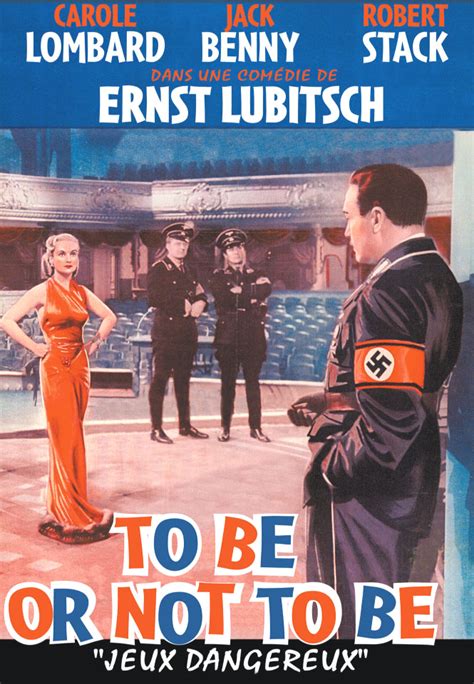To Be or Not to Be
directed by: Ernst Lubitsch, year: 1942
actors: Carole Lombard, Jack Benny, Robert Stack, Felix Bressart
actors: Carole Lombard, Jack Benny, Robert Stack, Felix Bressart

Description:
"To Be or Not to Be" (1942) is a wartime comedy by Ernst Lubitsch, starring Carole Lombard and Jack Benny. In Nazi-occupied Warsaw, a theatre troupe led by Maria and Joseph Tura uses disguises and wit to uncover a Gestapo spy and foil a dangerous plot, turning peril into farce. Lubitsch blends romance, satire, and suspense with nimble dialogue and brave performances, delivering a witty critique of tyranny through theatrical bravado.Keywords:
Screwball, Comedy, War Time Satire, Farce, Romantic ComedyIs To Be or Not to Be a good movie?
"To Be or Not to Be" is a 1942 comedy directed by Ernst Lubitsch, often regarded as a classic. The film, set during World War II, cleverly blends humor and satire while addressing serious themes like deception and resistance against tyranny. It stars Jack Benny and Carol Lombard, who deliver memorable performances. The film is praised for its sharp wit, clever writing, and Lubitsch's signature comedic style. While it may not appeal to everyone due to its era and subject matter, it is considered a significant work in film history and is well-regarded by many cinephiles.
Is Mel Brooks to be or not to be a remake?
Yes, Mel Brooks' "To Be or Not to Be" (1983) is a remake of the 1942 film of the same name directed by Ernst Lubitsch. Both films are comedies that revolve around a theatrical troupe in Nazi-occupied Poland, using humor to address serious themes like war and identity. Brooks' version updates the story with his signature comedic style while retaining the original's core premise. The 1983 film stars Brooks and Anne Bancroft, showcasing the blend of satire and farce typical of Brooks' work.
Why was the film to be or not to be considered by the public to be bad taste?
The 1942 film "To Be or Not to Be," directed by Ernst Lubitsch, was considered in bad taste by some due to its comedic portrayal of Nazism and the Holocaust during World War II. Released shortly after the war began, the film's use of satire and humor to address serious themes like oppression and tyranny was controversial. Critics argued that making light of such a grave situation was inappropriate, leading to mixed reactions from audiences. However, it has since been reevaluated and is now regarded as a classic for its boldness and wit.
What happens at the very end of the film to be or not to be?
At the end of the film "To Be or Not to Be," the main characters, Maria and Frederick Bronski, successfully outsmart the Nazis and ensure the safety of their theater company. They reveal their true identities during a chaotic performance, leading to a comedic yet triumphant resolution. The film concludes with them celebrating their victory and resilience, emphasizing themes of courage and the power of art in the face of tyranny. The final moments highlight their renewed hope and the importance of laughter even in dark times.
Explore More Categories:
Racing Labor Rights Intuition Cultural Insights Pranks Contemporary Realism Mountaineering Dehumanization Occupation Investigative Documentary Class Disparity Father Daughter Pop Culture Siblings Folklore Horror Mockumentary Southern Culture Assimilation Urban Fantasy Fantasy 1970s Creature Feature Evolution Colonialism